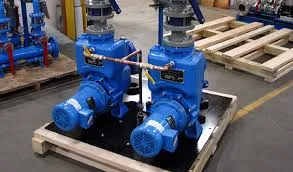English
- Afrikaans
- Albanian
- Amharic
- Arabic
- Armenian
- Azerbaijani
- Basque
- Belarusian
- Bengali
- Bosnian
- Bulgarian
- Catalan
- Cebuano
- Corsican
- Croatian
- Czech
- Danish
- Dutch
- English
- Esperanto
- Estonian
- Finnish
- French
- Frisian
- Galician
- Georgian
- German
- Greek
- Gujarati
- Haitian Creole
- hausa
- hawaiian
- Hebrew
- Hindi
- Miao
- Hungarian
- Icelandic
- igbo
- Indonesian
- irish
- Italian
- Japanese
- Javanese
- Kannada
- kazakh
- Khmer
- Rwandese
- Korean
- Kurdish
- Kyrgyz
- Lao
- Latin
- Latvian
- Lithuanian
- Luxembourgish
- Macedonian
- Malgashi
- Malay
- Malayalam
- Maltese
- Maori
- Marathi
- Mongolian
- Myanmar
- Nepali
- Norwegian
- Norwegian
- Occitan
- Pashto
- Persian
- Polish
- Portuguese
- Punjabi
- Romanian
- Russian
- Samoan
- Scottish Gaelic
- Serbian
- Sesotho
- Shona
- Sindhi
- Sinhala
- Slovak
- Slovenian
- Somali
- Spanish
- Sundanese
- Swahili
- Swedish
- Tagalog
- Tajik
- Tamil
- Tatar
- Telugu
- Thai
- Turkish
- Turkmen
- Ukrainian
- Urdu
- Uighur
- Uzbek
- Vietnamese
- Welsh
- Bantu
- Yiddish
- Yoruba
- Zulu
Telephone: +86 13120555503
Email: frank@cypump.com
Aug . 01, 2024 09:21 Back to list
Exploring the Efficiency and Innovations in Pipeline Pump Technologies for Modern Industries
Understanding Pipeline Pumps An Essential Component of Fluid Transportation
Pipeline pumps play a crucial role in various industries, facilitating the efficient transportation of liquids over long distances. These specialized pumps are designed to meet the demands of several applications, including oil and gas, water supply, chemical processing, and wastewater management. This article delves into the significance, types, and operational principles of pipeline pumps.
The Importance of Pipeline Pumps
In many industrial processes, pipelines are the arteries that transport fluids from one location to another. Pipeline pumps ensure a continuous flow, overcoming obstacles such as elevation changes or friction losses within the pipe. Without these pumps, transporting materials like crude oil, natural gas, or even potable water would be vastly inefficient and often impossible. The energy efficiency, reliability, and performance of these pumps directly impact operational costs and overall system effectiveness.
Types of Pipeline Pumps
Pipeline pumps can be broadly categorized into two types centrifugal pumps and positive displacement pumps
.1. Centrifugal Pumps These pumps use a rotating impeller to impart kinetic energy to the fluid as it moves through the system. The flow is continuous, and the pressure develops as the fluid exits the impeller and enters the volute casing. Centrifugal pumps are commonly used for transporting large volumes of liquids at relatively low pressures, making them ideal for water supply applications and moving hydrocarbons in the oil and gas sector.
2. Positive Displacement Pumps Unlike centrifugal pumps, positive displacement pumps operate by trapping a fixed amount of liquid and forcing it through the discharge pipe. This type of pump excels in applications requiring high-pressure delivery, such as in hydraulic systems or situations where the fluid viscosity is significant. Types of positive displacement pumps include gear, diaphragm, and piston pumps.
pipeline pumps

Operational Principles
The efficiency of pipeline pumps relies heavily on their design and the principles of fluid dynamics. When selecting a pump for a specific application, factors such as flow rate, pressure requirements, and the characteristics of the fluid (including viscosity, temperature, and corrosiveness) must be considered.
One of the challenges associated with pipeline pumping is managing friction loss, which occurs when the fluid interacts with the pipe walls. This loss can be minimized through proper pipe sizing and smooth material selection. Additionally, maintaining optimal pump performance necessitates regular maintenance checks, including inspection of seals, bearings, and impellers, to prevent leaks and wear that could compromise efficiency.
Challenges and Innovations
As industries evolve, so do the challenges faced by pipeline pumps. The push for sustainability has led to increased interest in energy-efficient pump designs and the integration of smart technology for real-time monitoring and control. Innovations such as variable frequency drives (VFDs) allow pumps to adjust their speed based on the system’s demands, resulting in energy savings and reduced wear.
Moreover, advancements in materials used for pump construction—such as composites and advanced alloys—are enhancing the lifespan and performance of pumps exposed to harsh chemicals or corrosive environments.
Conclusion
In conclusion, pipeline pumps are integral to the infrastructure of modern industries. They provide the essential service of transporting fluids efficiently and reliably, impacting everything from energy production to water supply. By understanding the types, operational principles, and emerging trends in pump technology, industries can ensure the effective management of their fluid transportation needs, ultimately leading to more sustainable and cost-effective operations. As technology continues to advance, the future of pipeline pumps looks promising, poised to meet the demands of an increasingly dynamic industrial landscape.
-
ISG Series Vertical Pipeline Pump - Chi Yuan Pumps Co., LTD.|High Efficiency, Energy Saving, Low Noise
NewsJul.30,2025
-
ISG Series Vertical Pipeline Pump- Chi Yuan Pumps|High Efficiency&Low Noise
NewsJul.30,2025
-
ISG Series Vertical Pipeline Pump-Chi Yuan Pumps Co., LTD.|High Efficiency&Energy Conservation
NewsJul.30,2025
-
ISG Series Vertical Pipeline Pump - Chi Yuan Pumps Co., LTD.|Advanced Hydraulic Design&Energy-Efficient Solutions
NewsJul.30,2025
-
ISG Series Vertical Pipeline Pump - Chi Yuan Pumps Co., LTD.
NewsJul.30,2025
-
ISG Series Vertical Pipeline Pump - Chi Yuan Pumps Co., LTD.|energy-efficient fluid handling&industrial durability
NewsJul.30,2025










